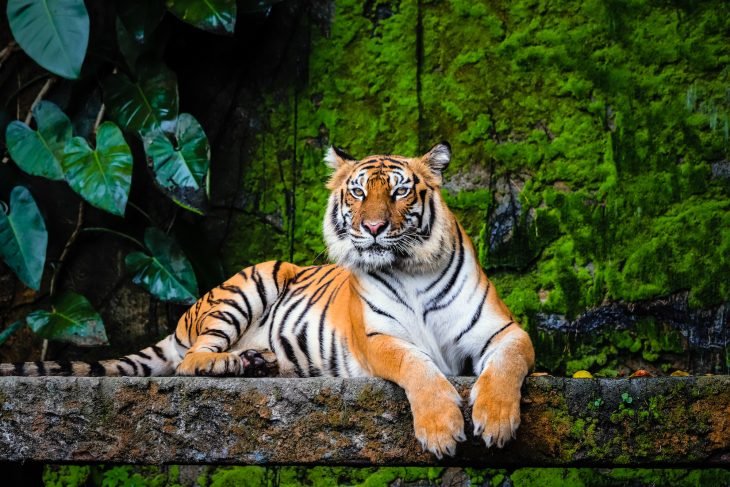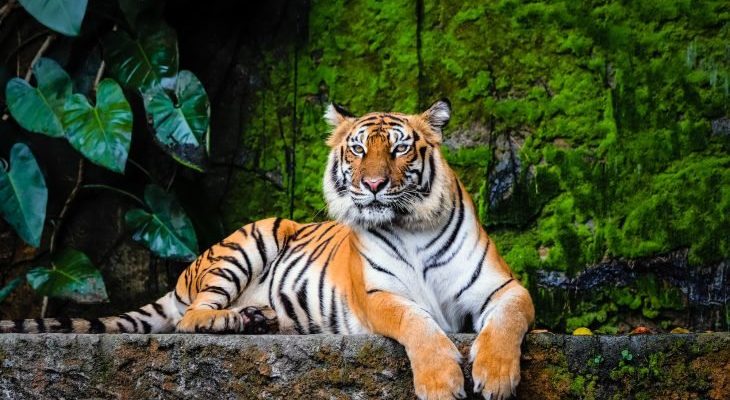
Understanding the Bengal tiger is like flipping through the pages of a thrilling adventure novel. Each page reveals something new and exciting that paints a picture of their home, behavior, and conservation status. From their striking appearance to their essential role in the ecosystem, you might find yourself fascinated by these incredible animals.
So, why should we learn more about Bengal tigers? Well, not only are they a vital symbol of wildlife conservation, but they also play a significant role in maintaining the balance of their environments. Let’s explore ten fascinating facts that will deepen your appreciation for this iconic species.
1. The Largest Tiger Subspecies
Bengal tigers are the largest of all tiger subspecies. Males can weigh between 400 to 500 pounds, and they can reach lengths of up to 10 feet, including their tails. Imagine a creature that weighs as much as a small car! Their size is complemented by their strong, muscular build, which helps them take down prey.
These tigers have adapted to various environments, from dense forests to grasslands. Their impressive size allows them to be apex predators, helping to keep other animal populations in check. You might be wondering how we can tell them apart from other tigers. The Bengal tiger’s coat features a unique pattern of stripes that varies for each individual, much like a human fingerprint.
2. A Unique Coat and Stripes
Speaking of stripes, did you know that each Bengal tiger’s stripe pattern is completely unique? It’s like having a one-of-a-kind piece of art! The bold orange coat with black stripes helps them camouflage in their natural habitat, which is essential for stalking prey.
This striking coloration isn’t just for show; it plays a crucial role in their hunting strategy. With their stripes blending into the dappled light of the forest, they can remain hidden from unsuspecting animals. Imagine being a deer in the wild—those stripes can make a Bengal tiger look like a shadow lurking in the trees.
3. Top Predators of the Jungle
Bengal tigers are at the top of the food chain in their environment. They mostly hunt large prey such as deer, wild boar, and even young elephants. When hunting, they utilize their incredible strength and stealth to approach their target, often waiting patiently for the perfect moment to pounce.
Instead of using endurance to chase down their prey, tigers rely on short bursts of speed and powerful leaps. A quick sprint helps them close the distance before their prey realizes what’s coming. This unique hunting method showcases their intelligence and adaptability, making them master hunters of the jungle.
4. Solitary Creatures
Unlike lions, who live in prides, Bengal tigers are solitary animals. They enjoy their alone time and are highly territorial. Each tiger has a defined territory that they mark with scent markings and scratches on trees. This helps communicate their presence to other tigers and keeps unwelcome visitors at bay.
You might be surprised to learn that despite their fierce independence, these tigers will come together during mating season. Once cubs are born, however, the mother takes on the responsibility of raising them alone. This solitary lifestyle has been key to their survival in the wild.
5. Cubs: The Future of the Species
Speaking of cubs, Bengal tiger cubs are absolutely adorable! They are born blind and rely heavily on their mother for nourishment and protection. A typical litter consists of 2-4 cubs, and they are particularly vulnerable in their early months.
Cubs stay with their mother for about two years, learning essential survival skills like hunting and navigating their territory. It’s crucial for them to develop these skills before heading out on their own. Unfortunately, many cubs face dangers such as poaching and habitat loss, which makes conservation efforts all the more vital.
6. Their Habitat Is Under Threat
Bengal tigers once roamed across much of Asia, but today their habitat is rapidly shrinking. Deforestation, human encroachment, and poaching are major threats to their existence. Imagine living in a home that keeps getting smaller; that’s exactly what’s happening to these magnificent creatures.
Conservation efforts are underway to protect the Bengal tiger’s habitat and their populations. National parks and reserves have been established, providing a safe haven for these tigers. Organizations work tirelessly to educate communities about the importance of preserving wildlife.
7. A Symbol of Conservation
The Bengal tiger is more than just a big cat; it’s a symbol of wildlife conservation. When people think of saving tigers, they often think of Bengal tigers. Their popularity plays a crucial role in raising awareness about the issues facing all wildlife.
Many organizations, like the World Wildlife Fund (WWF), focus their efforts on protecting these majestic animals. They emphasize the importance of biodiversity and how the health of the ecosystem hinges on the survival of tigers. By working to conserve Bengal tigers, we are also helping countless other species thrive.
8. Their Communication Skills
Bengal tigers are quite vocal, and they have a range of sounds to express themselves. From growls and roars to chuffing and hissing, their vocalizations convey different messages. When you hear a tiger’s roar, it can travel over miles of forest; it’s like a powerful announcement to other tigers, saying, “I’m here!”
In addition to sounds, they also communicate through body language and scent markings. This multi-faceted communication system plays a key role in their social interactions and territorial disputes.
9. Their Role in Ecosystem Balance
Bengal tigers are apex predators, and they play a crucial role in maintaining the balance of their ecosystem. By controlling the populations of herbivores, they ensure that vegetation remains healthy. Without tigers, herbivore populations can explode, leading to overgrazing and habitat degradation.
Think of them as nature’s balance keepers. Protecting tigers also protects the many other species that share their habitat, creating a ripple effect of positive outcomes for the environment.
10. Conservation Success Stories
Despite the challenges they face, there are success stories to celebrate. In recent years, conservation efforts have started to yield positive results. For example, India has seen a significant increase in its Bengal tiger population due to dedicated wildlife protection measures and habitat preservation.
These efforts include anti-poaching initiatives, habitat restoration, and community involvement. The resurgence of the Bengal tiger is a testament to the power of conservation and the collective efforts of dedicated individuals and organizations.
In conclusion, the Bengal tiger is more than just an awe-inspiring animal; they represent the beauty and fragility of our planet’s ecosystems. By learning about them, we take a step toward understanding how to protect these magnificent creatures and their habitats. Remember, every small effort contributes to a larger cause. So, let’s continue to advocate for the conservation of Bengal tigers for generations to come.

